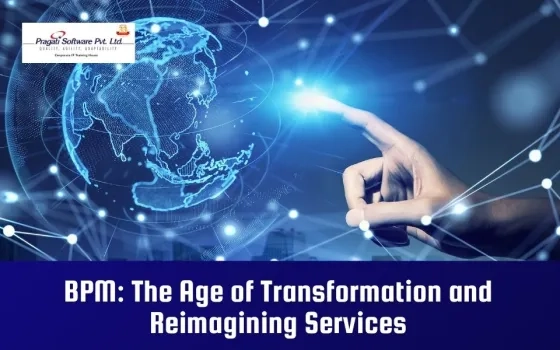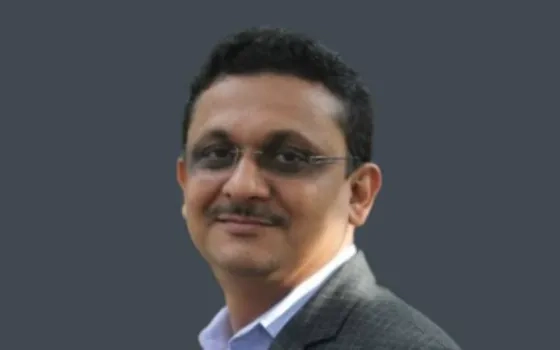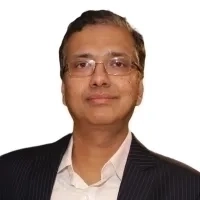Dare to Dream, but Also Dare to Execute – In Conversation with CP Gurnani
Mr CP Gurnani, the CEO and Managing Director of Tech Mahindra, is the present Chairman of NASSCOM for FY 16 – 17. While he was interacting with the media, it was very interesting to gather some of his insights on change, managing that change, and how NASSCOM is working with varied stakeholders to enable the ecosystem to be future- ready.
The idea of mini NASSCOMs charting out an accelerated growth path
Someone posed the inevitable question – the challenges which lay ahead of NASSCOM. In his inimitable style, he brushed it aside calmly, and remarked, that he prefers to see them as opportunities instead. NASSCOM after all, represents a 150 billion dollar industry and is responsible for 4 million technologists working across the globe. A recent NASSCOM-Mckinsey study indicates that this figure will touch 350 billion USD, in less than a decade from now. Given the state of accelerated growth and heightened levels of activity that is presently being witnessed, NASSCOM too is fundamentally on a change-mode, as seen in its structure comprising of “7 mini NASSCOMS”, or the councils namely: IT Services, Domestic IT, Global-In-house Centres, Internet, Product, Engineering & R&D, and BPM. These councils are chaired by industry leaders who are empowered to take decisions as they grow their domains, while collaborating with one another as and when opportunity beckons.
The Spirit of Collaboration
This brings us to the moot question, how exactly is change being effected at ground level? Each of these councils have a significant base already, and have been functioning independently. Typically, the change being referred to, is found in the collaborative approach that councils are now adapting to, in their quest for achieving desired scale. For instance, driving the Smart Cities initiative, would necessitate a synergistic approach between the two councils – Domestic & Engineering, to leverage on IoT opportunities. In addition there are other areas of opportunity (challenges?) for instance, in Cyber-security, Skill building, CSR which are also being addressed by affiliate bodies of NASSCOM namely, DSCI, SSC and NASSCOM Foundation, respectively. Absence or even inadequacy of any form in these areas would leave a negative impact on the industry, and NASSCOM is ensuring that there are no palpable gaps in the long run. The whole is greater than the sum of its parts.
Proactive, not a reactive approach
H1 B Visa related issues have been mounting, and as expected, when in presence of the Chairman of NASSCOM, the conversation inevitably veered towards that. Deftly, he avoided courting any controversies, as he patiently explained how NASSCOM’s Global Trade Development, through its partners in Washington and London was addressing this issue in a sustained manner. Certain realities have worked favourably for India and are not likely to go away too soon. A significant number of American heavyweights, outside of US, have their largest development centres in India, so the country provides a large base. Almost all American companies realise this. Moreover, there is an acute skill shortage there, which must be filled by hiring talent from outside of the US.
Beyond US, in Malaysia for instance, 80% of the developers are Indians, and this has resulted only after many decades of investment in skill-building which will remain awhile to guide Indian predominance. Mr Gurnani also said, the government is increasingly taking a strong stand in international fora, like the WTO, and articulating discriminatory policies that cause severe strains on international trade practices and relations. NASSCOM’s members are the who’s who of the tech industry, and while being in constant touch with them, the apex body is well aware of these challenges, and equally cognizant of the fact that there will be multiple views on the same subject. NASSCOM has always striven to make a balanced representation, keeping in mind the industry-wide concerns and its impact in future. The job of NASSCOM is NOT to always react to issues which may be varied and contentious, but to work with think-tanks to understand the underlying complexities and sensitivities of these issues, and suggest appropriate policy measures in accordance.
Threat posed by other large economies
There’s often an underlying concern – will China prove to be an unsurmountable challenger? Undoubtedly, it is a behemoth and its massive size makes China a strong contender for the pole position. Size, on the other hand has a ripple effect as well. Several member companies of NASSCOM realise this, and are collaborating with their Chinese counterparts to build on scale. This is typically characterized by the “collaborate and compete” approach. Filipinos too spend a significant amount of time in India to learn about Indian best practices, and yet the two countries are fiercely competitive in the BPM industry.
Digital Disruption and pre-empting the future
For instance, it would be futile to view IoT in isolation, but as a force multiplier of sorts, which can bring about radical change in process improvements. Manufacturing revolution that’s been scripted often and now masquerades under the moniker Industry 4.0, has been levered on IoT opportunities to take it to the next level of industry maturity.
Another example. Today, the average newspaper reader opens a site (say Indian Express) and goes to the appropriate section to read; in future this will change. Sensors should be able to detect daily surfing habits, and guide the user accordingly without a manual prompt. The world has been amplified. Sensors and advanced technologies are there, even though widespread adoption may yet be a year or two away. In future, things will radically change, so as NASSCOM, how do we reasonably ensure that the industry is future-ready? Towards this, we need to work with academic institutions and ensure that skilling is in the right direction. Obsolescence, and that too at a rapid pace has always been a grim reality for the industry.
Proliferation of machines and loss of jobs, is it real?
Prof Vivek Wadhwa, likes to refer to industries that face obsolescence as those which will become toast. Mr Gurnani gave the example of Malhotra Shaving Blades which got completely squashed by Gillette, and its whole new approach to shaving as an experience. Change in business has been the only constant so far, but in the last few years, this rate of change has gone up tremendously, aided by technology. The IT Services Council is working closely with IIM B to structure a program around the future of leadership. Just as new opportunities crop up, so do threats. “Cell phone is the gateway to trouble” says Mr Gurnani. We can choose to ignore it or do something about it. Make no mistake, it is real!
Tech shifts will certainly impact the Indian IT industry, but it will actually embrace the change, he opines. Managers of the future may not recruit in a linear fashion as mundane repetitive jobs will get replaced by machines, but as the shift happens inexorably, humans will have to go on a re-skilling overdrive to build skills for future. This will be an opportunity for the industry to reinvent itself once again, as it has always done in the past.
Skilling and making people employable for future
This is one of the major areas of concern and focus, in equal measure, for NASSCOM. The apex body has been rather proactive in its approach and works very closely with MHRD. This industry is typically engineer-centric. Simply put, it employs more engineers than from other disciplines in comparison. The anomaly is, given the number of engineering colleges that have sprung up in the last decade or so, the quality has come down drastically. An aspirant with 95 % is unable to secure admission in the hallowed portals of St Stephens / Hindu College / Miranda House for instance, but another can easily get admission into engineering with a far lower percentage of marks. Are we breeding an environment which fundamentally compromises on quality? If so, what will be its long-term effect? Will this phenomena not result in a substantive proportion of the educated population being unemployable?
The future is about data. What we do it. How we interpret zetabytes and petabytes of data to our advantage and quick decision making. New-age skilling would entail individuals to be ambidextrous and understand the phenomenal speed of computing. The rate at which change in technology is taking place, is much faster than what talent is able to keep pace with. How many colleges in India are able to pre-empt the future and render students world-worthy? But, to be absolutely fair, this is a global challenge and must not be construed, that it impacts India alone.
Leadership in an industry where the average age is 29 (or thereabouts):
- Parenting role. Leaders will command respect only if they are able to do the very same things which they ask of their employees, and keep their best interest in mind at all times.
- Involvement. He cited the analogy of a soccer coach. The coach is really the captain. He gives direction to the team. The coach runs around, jumps, shouts and indulges in various other histrionics, but ultimately the credit goes to the players.
- Calls future bets. He should have a vision for tomorrow and build the organisation accordingly.
What’s inspirational?
The tea hawker who is stationed outside his sprawling Tech Mahindra campus, is an inspirational story! Why? The canteen doles out subsidized tea, and yet the hawker has a never-ending flow of customers (TechM employees). This simple man has been able to establish a personal connect. He knows his customers, whereas the canteen guys despite their obvious advantages, are mere robots doing their jobs. Mechanical in approach, lacking in warmth and relationship building skills, perhaps. This is inspirational, albeit with very humble roots.
Relaxation techniques for senior execs (if any)
For CP Gurnani, relaxation is about being clear of one’s priorities. He enjoys work, to the extent that it may even be therapeutic. And, he is very clear about it. “Work life” balance is chimerical and best left to individuals, how much work is a balanced approach and what isn’t. Having said that, he never neglects the needs of his family, when required. If need be, he will fly down from Singapore for a day to attend to an invitation, and fly back the very next day, if that relationship / friendship is particularly precious.
Message to youngsters
Much more than “daring to dream”, it is about daring to execute. Getting things done! Sure, there was someone who dreamt of putting man on the moon, but ultimately it was about the person who actually put Neil Armstrong there. If there’s no execution, then dreams end up as castles in mid-air.
Biggest challenge that he has faced in his career
When TechM took over Satyam in 2009, they realised that 10k employees were in excess. 10k families, whose lives were precariously balanced. He spent many agonizing months, fretting over what to do and sought counsel from many people, including his board members, mentors, academicians and others. Admittedly, the rightsizing exercise was conducted in a humane way, and it was the right thing to do for the company at that time, the larger question always loomed large: was it the right thing to do from an individual standpoint? Think about all those people, and thousands of them who had to go, but for no fault of theirs. Life is also about battling conflicting thoughts and yet taking the right decision, which may be incredibly tough. Do you dare to execute?
























